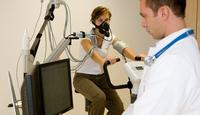Neurology Monitoring : Unveiling Secrets Of The Brain Observatory
 |
| Neurology Monitoring |
The field of neurology monitoring
is akin to having an observatory for the brain, a powerful lens through which
we can unveil the intricate secrets of the human mind. It involves the use of
sophisticated tools and techniques to monitor and record brain activity,
providing valuable insights into neurological function, disorders, and overall
brain health.
At the heart of this observatory
lies the electroencephalogram (EEG), a non-invasive technique that measures the
electrical activity of the brain. EEG records the brain's rhythmic electrical
patterns, known as brainwaves, which vary based on different mental states and
activities. These brainwaves are Neurology Monitoring vital indicators of brain function, providing crucial
information for diagnosing and managing various neurological conditions such as
epilepsy, sleep disorders, and brain injuries.
The brain observatory extends
beyond traditional EEG and encompasses a broad spectrum of advanced monitoring
technologies. Functional magnetic resonance imaging (fMRI) enables us to map
brain activity by measuring changes in blood flow, showcasing which regions are
active during specific tasks or cognitive processes. Magnetoencephalography
(MEG) records magnetic fields produced by neuronal activity, providing high
spatial and temporal resolution of brain functions.
Furthermore, the brain observatory
incorporates wearable devices, implantable sensors, and other remote monitoring
systems that allow continuous data collection outside of clinical settings.
This continuous monitoring provides long-term insights into brain health and
behavior, enabling early detection of neurological abnormalities and
facilitating personalized treatments.
The secrets revealed by the brain
observatory extend to the emerging fields of neurofeedback and brain-computer
interfaces (BCIs). Neurofeedback utilizes real-time EEG data to enable
individuals to gain control over their brain activity and enhance cognitive
performance or manage conditions like ADHD and anxiety. BCIs establish direct
communication between the brain and external devices, fostering opportunities
for assisting individuals with paralysis or neurodegenerative diseases..
Maternal contractions as well as
the fetus's heart rate and movement are tracked using fetal monitoring devices.
Fetal Monitoring is essential in medical
terminology to continuously monitor the unborn child's health and guarantee a
safe delivery. The baby's heart rate is measured during fetal monitoring.
In conclusion, the field Neurology Monitoring stands
as a powerful brain observatory, where cutting-edge technologies and
data-driven insights converge to unravel the secrets of the human brain. By
embracing these advancements, we can expect to revolutionize neurological care,
diagnose conditions earlier, and develop more effective treatments, ultimately
unlocking new frontiers in understanding the complexity of the mind.



Comments
Post a Comment